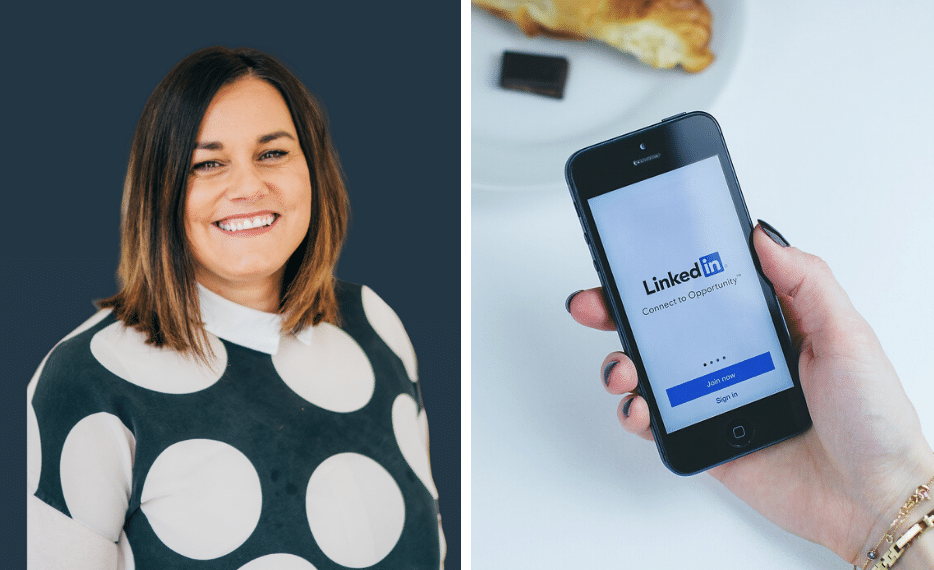In recent years, the popularity of LinkedIn has grown exponentially. What once started as a digital CV website has now grown into one of the most popular professional networking platforms in the world.
With over 562 million users from over 200 countries and growing at a rate of two new users per second, the social network for businesses represents a significant opportunity for small businesses to make connections, engage in conversations, and grow their business through increased conversions.
Niamh Taylor is an award-winning Digital Marketing Consultant, and founder of digital marketing agency, Digital Twenty Four. Having developed and delivered a range of digital transformation programmes for a wide range of businesses, including local councils, Niamh is highly experienced and well-versed in the use of LinkedIn for business growth.
Niamh delivered her training at a Lunchtime Learning session facilitated by the Cathedral Quarter BID (Business Improvement District).
Here are Niamh’s key takeaways:
1. Custom Privacy and Functionality Settings
When it comes to using their LinkedIn profile Niamh said a lot of people just work off the settings that are automatically assigned by the platform.
She added: “There are small adjustments and tweaks that you can make to improve your LinkedIn experience. Most of these can be found in the settings of your LinkedIn page, so go in there and see what you can change to make your LinkedIn experience more relevant and beneficial to you.”
Niamh’s key points around privacy and functionality were:
LinkedIn assigns a unique identification number to each user profile. However, you can edit this to include your name in your profile URL, which is important for search engine optimisation.
You can edit which sections of your profile are visible to the public (all LinkedIn users), or just to your own connections. Turn off sections that are not relevant to you, for example languages if you only speak one, and recommendations if you have not received any from fellow LinkedIn users.
Within your account settings you can choose to turn off the automatic play of videos in your newsfeed. This is purely a personal preference but can improve your experience of using LinkedIn if you find automatic play to be annoying or distracting.
Settings also allow you to disable features such as posting/notifying users when you make changes to your profile. If you are reviewing and editing your profile, you may want to disable this feature, so all your contacts are not notified about each individual change you make.
2. Optimising Your Profile
In order to optimise your profile Niamh pointed out some straightforward steps you can take to make sure your profile is as complete and professional looking as possible.
“Some of these steps may seem like a minor detail, but they can make all the difference when someone is debating reaching out and doing business with you” said Niamh.
Her key points around optimising your profile are:
You may not need or want to do this, but you can update your name to include more than just your name. For example, you can include a very short description of what you specialise in, or any accreditations you have with industry bodies. For example, Niamh’s name on LinkedIn includes Digital Marketing Consultant, FCIM (Fellow of the Chartered Institute of Marketing).
Update your headline to something that is useful for others to know about you or your business.
Make sure all relevant sections of your profile are completed and consider turning off or hiding sections that are not relevant.
Use a professional head shot or image for your profile photo. Profiles with a good quality picture, as opposed to a logo or something that is difficult to make out, get more engagement. If you have lots of employees on LinkedIn, consider getting head shots for all the team or using the same background for the photos. This will increase brand awareness and present a professional image for the business.
Update the education section to include any training courses that you complete.
Reach out to your connections to ask for recommendations on the platform.
When building your network and sending out connection requests, include a personal message where you can.
Feature any professional bodies that you are a member of and add in some interests in the relevant section – including interests is a quick way for others to get to know more about you.
Niamh added: “LinkedIn carried out research to identify the key attributes employers look for on the platform. To really make your profile stand out, refer to these or find ways to illustrate that you have these skills – adaptability, positivity, resilience, proactivity and confidence.”
3. Contagious Content
Whether you are sharing a post, writing an article, or engaging in a conversation on LinkedIn, Niamh said users should aim to provide advice on a common problem, be amusing, inspirational or provide interesting information.
“The aim with LinkedIn is to engage and be engaging. Good quality imagery is a must, as well as catchy titles to draw attention” she added.
Niamh also pointed out that generally, the best times to post content are between 7am and 9am, 12pm and 2pm or after 4pm, all on weekdays. The platform gets less traffic at the weekend.
An important note to the audience from Niamh was that company pages have not taken off yet on LinkedIn, with the platform announcing regular changes to try and increase the use and visibility on these pages. Where you do have a company page, encourage all employees to share any content you put on it to increase engagement.
Check out Niamh’s full Lunchtime Learning on the Cathedral Quarter website: https://www.
To see more Lunchtime Learning sessions go to: https://www.

